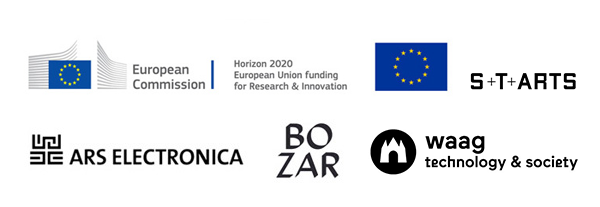Ars Electronica Linz isn’t just headquartered in the geographical heart of Europe; it’s also the hub of an interesting array of cooperative projects that span this continent. Such international collaboration regularly gives rise to exciting alliances among artists, scholars and businesspeople who team up in interdisciplinary projects that extend far beyond Austria’s borders.
Ars Electronica heads two of Europe’s most widest-ranging cooperative initiatives—the STARTS Prize launched two years ago by the European Commission to honor outstanding projects at the nexus of science, technology and art, and the European Digital Arts & Science Network that interlinks artistic institutions and scientific organizations in Europe. The Linz-based media art pioneer is also a key node in other alliances such as the European Network for Contemporary Audiovisual Creation.
We found out what these projects are all about and how they’ll fit into the lineup at this year’s Ars Electronica Festival from Festival Director Martin Honzik and Producer Veronika Liebl.
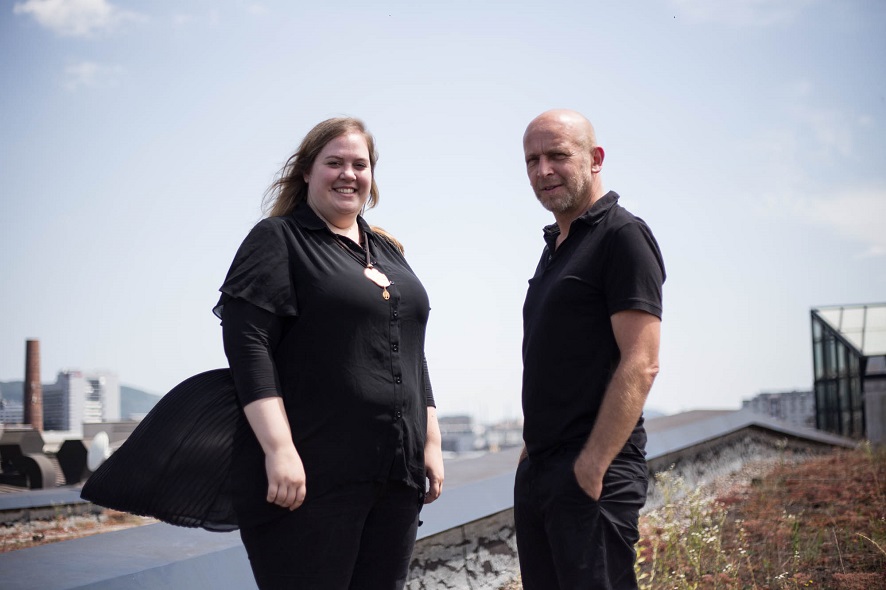
Veronika Liebl and Martin Honzik up on the roof of POSTCITY Linz. Credit: Vanessa Graf
One of the EU’s most important projects is the STARTS Prize, awarded for the second time this year pursunt to a competition conducted by Ars Electronica on behalf of the European Commission. What is STARTS and why was it launched?
Veronika Liebl: STARTS is an initiative of the European Commission, which, in light of the results of EU subsidy programs in recent years, came to the conclusion that technology and scientific knowhow alone aren’t sufficient to survive in competition. And that in R&D, social reflection and creativity don’t play a sufficient role in the development of new products, services and processes. The Horizon 2020 Program proposed several approaches by which social- and creativity-oriented ways of thinking can be better integrated into R&D. In STARTS, this entails the inclusion of creative artists and the integration of socially relevant aspects in scientific processes.
Martin Honzik: This is a matter of the proverbial “Art Thinking”—taking a different approach, conceiving things alternatively.
Veronika Liebl: The aim is to foster innovation in Europe by means of knowhow from art and creativity, especially in the IT and telecommunications fields.
Martin Honzik: Basically, we were commissioned to pose a question. We query our networks—as well as our contacts throughout the private sector and in academia—about collaboration that takes place beyond conventional channels. Artists, of course, are people whose approaches as well as their raw understanding of how to use technology make it possible for new perspectives to emerge.
Madeline Gannon received an Honorary Mention at STARTS 2017 for her work “Mimus”.
But STARTS doesn’t only consist of the STARTS Prize, and Ars Electronica doesn’t organize it alone. There are also some partner institutions.
Martin Honzik: We were commissioned to stage the STARTS Prize together with Brussels-based BOZAR and the Waag Society. And besides the STARTS Prize, there’s also a residency program, VERTIGO STARTS, hosted by Centre Pompidou and its IRCAM Institute, as well as other scientific partners such as the Fraunhofer Institute.
Veronika Liebl: The STARTS Prize honors projects that already have great accomplishments to their credit, that exemplify trailblazing forms of cooperation between art and industry, and that really demonstrate how innovative such collaborative arrangements between art and industry can be. VERTIGO STARTS, on the other hand, stages residencies that bring artists together with representatives of science and industry, research labs and institutions, and lines them up to launch projects.
“Shortcut” by David Kaltenback, part of the Artificial Skins and Bones Project, won the STARTS Prize 2016 in the category Innovative Collaboration.
Two STARTS Prizes endowed with €20,000 each are awarded in two categories. How do the two categories differ?
Veronika Liebl: The first STARTS Prize category, Innovative Collaboration, singles out for recognition outstanding examples of collaboration between science and art or industry and design. This is a matter of someone from a creative, artistic field teaming up with someone with a scientific, industrial background, and this collaboration resulting in an innovative project for a product or service. The second category, Artistic Exploration, honors an artist whose work is an outstanding example of an artistic application of a technology—for instance, in a new production process or material processing.
Martin Honzik: Innovation in production and in the economy as well as social innovation are very high up among the assessment criteria. The potential has to be clearly recognizable.
Etsuko Yakushimaro won this year’s STARTS Prize in the category of Artistic Exploration with her work “I’m Humanity”.
In other words, the artistic application gives rise to relevant innovation in a major sector.
Veronika Liebl: That’s exactly what STARTS is all about. This year’s winner in the Artistic Exploration category, Etsuko Yakushimaro, is a good example. Her artistic research and her artistic creativity take a trailblazing approach to a scientific topic—in this case, DNA as a storage medium for music.
Martin Honzik: There are these methods of using DNA as a data storage medium. Etsuko Yakushimaro is a Japanese pop star who had one of her hits stored in her DNA as an mp3 file. This is precisely the way we’ll be going. In the future, we will simply come up with totally new storage media—organic ones, for example. These media then have to be biochemically sequenced so that what needs to be stored can be input into them. In order to then be able to filter it out again, you have to understand how the medium is structured biologically.
The second winning project, “Rock Print,” deals with construction industry techniques.
Martin Honzik: “Rock Print” was produced by Gramazio Kohler Research, a group at the ETH–Swiss Federal Institute of Technology in Zurich. They used an oversized 3-D printer to redesign production procedures in the construction industry. Between each layer of building material, a “red thread” is 3-D printed and input to bond the layer instead of cement. This seems to be a pretty revolutionary approach in the construction industry. What really impressed us and the jurors was the idea of building something that already contains the possibility of deconstructing it. Somewhere in the structure, there’s an end to the “thread.” A part of the concept of this “Rock Print” sculpture that was submitted for prize consideration is that, following construction, a robot pulls on the end of the “thread” and tears the sculpture down. This idea that a constructor already assumes responsibility for how the work will eventually be disposed of is a basic principle that’s sorely lacking in society today.
“Blink: Humanising Autonomy” by Adam Bernstein, Raunaq Bose, Leslie Nooteboom and Maya Pindeus received an Honorary Mention at STARTS Prize 2017.
Where does Ars Electronica identify STARTS’ potential at this interface of art and science?
Martin Honzik: Ars Electronica is a platform for artists who are normally not represented on the art market. It’s interesting for us to see where these high-skilled artists with their profound understanding of technology find an audience. When you confront these artists with the problems of industry, then they show that they do indeed have great potential to contribute to innovative new solutions. And that goes both ways—industry profits from the knowhow of the artists, who, in turn, profit from the industrial facilities’ infrastructure, which in most cases is available only here in such dimensions or quality. They can demonstrate what is possible with these devices beyond industrial applications.
Veronika Liebl: One factor that is surely germane here is that digitization has made development cycles faster and more dynamic. Great insight, reflection and applied creativity are often ascribed to artists, and these are qualities that, in addition to technological and scientific insights, are necessary for a company to succeed. Another aspect is that it’s become increasingly important in R&D to address social, ecological and economic challenges in Europe. And in more and more cases, outside consultants are brought on board to achieve this—in our case, creative artists. This is already evident in the educational field with the shift from STEM [science, technology, engineering, mathematics] to STEAM education.
What role will STARTS projects such as VERTIGO STARTS play at the 2017 Ars Electronica Festival?
Martin Honzik: The festival is a platform that, of course, should be employed by this other element of the EU’s STARTS initiative. Our partner institutions have the opportunity to use the festival to meet us.
Veronika Liebl: VERTIGO STARTS is definitely one of the most important driving forces in this field in Europe. Accordingly, it’s also important for us to have them here to jointly develop public strategies for additional activities and strategic thrusts.
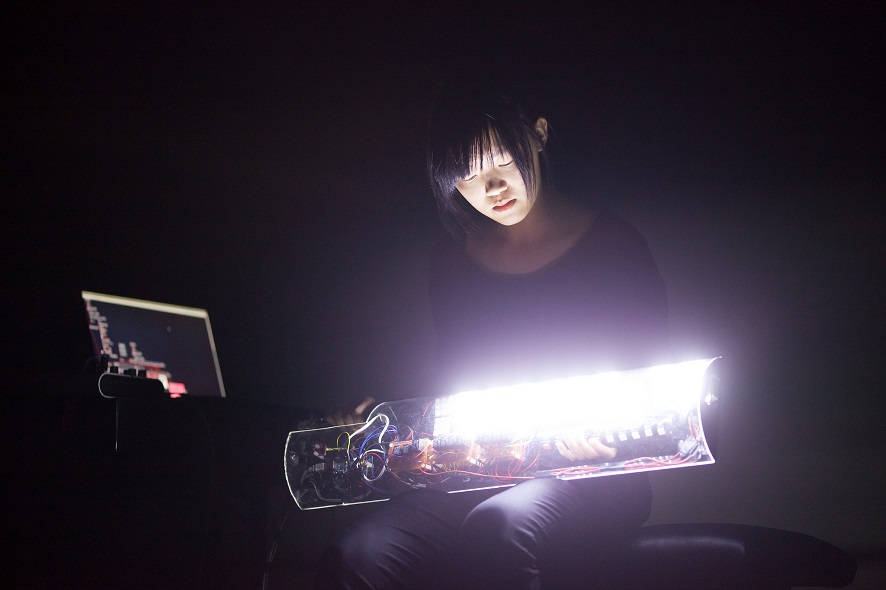
Yen Tzu Chang, winner of one of the artist residencies of the European Arts & Science Network. Credit: Florian Voggeneder
The Ars Electronica Festival plays an important role in networking among artists, scientists and creative people. This is also one of the functions of the European Digital Arts & Science Network, another EU project Ars Electronica is involved in. What is its mission?
Veronika Liebl: The European Digital Arts & Science Network is a collaborative project that involves seven European cultural institutions and four scientific organizations: CERN, ESO, ESA and Fraunhofer Mevis. We organize joint programs including residencies, exhibitions, conferences and workshops.
Even if this is a hot topic at the moment—organizing joint ventures involving art and industry or art and science in ways that are sustainable and make sense for everyone involved entails hidden challenges. You need someone who speaks a common language, who can act as a facilitator and bring these worlds together. This is something that we have gained quite a bit of experience bringing about in a considerable number of projects including the European Digital Art & Science Network. We give artists the opportunity to work in other disciplines and to further develop their art. In contrast to STARTS, this is not so much a matter of innovation or social development; the accent here is on an artistic career path. Needless to say, it’s of enormous importance for many artists to talk to people in other fields, to engage in exchange and collaboration on a high level. This is something that we can really make happen in conjunction with European Digital Arts & Science Network residencies, and then present the results in exhibitions travelling throughout Europe.
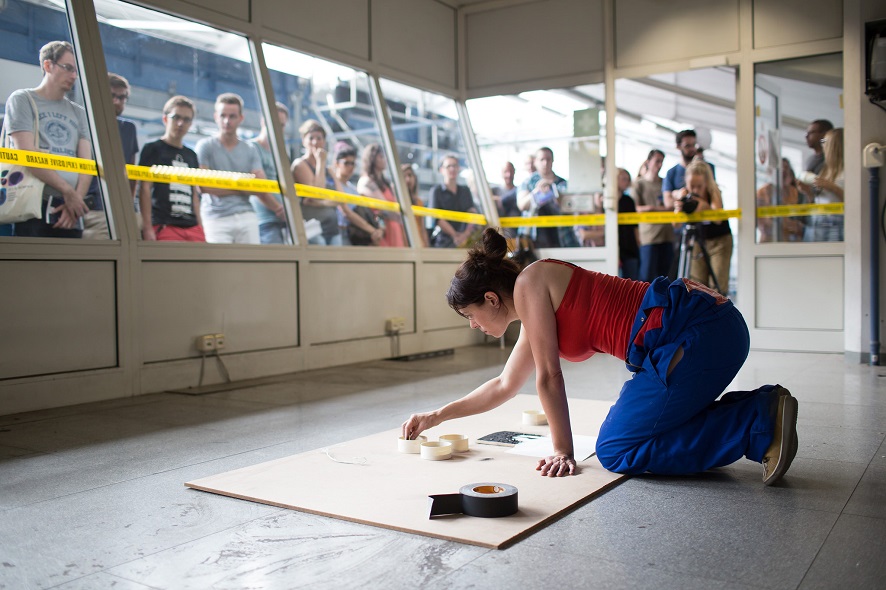
Aoife van Linden Tol at the 2016 Ars Electronica Festival. Credit: Florian Voggeneder
What residencies have already been staged under the aegis of this program?
Maritn Honzik: One example is an artist who’s currently preparing for the festival, Aoife van Linden Tol. She recently had a long stay at the European Space Agency, where she was received with incredible openness by the organization’s various divisions. The artist works with explosives, does controlled blasting, and composes these explosions into a sequence of various artistically explosive interventions. This work of art is being staged under the supervision of local governmental agencies, without whom it would be inconceivable to produce an event of this sort.
What we also notice in our collaboration with scientific institutions is that, right from the start, the relationship is one between equals, which immediately gives rise to mutual interest.
Sarah Petkus during her Artist Residency at ESA.
Are all residencies different or are there commonalities?
Veronika Liebl: Generally speaking, each residency proceeds differently, depending on what points of reference the scientific partner brings to the table.
Martin Honzik: And what background the artist brings to this encounter.
Veronika Liebl: In most cases, the residency on the premises of a scientific partner proceeds for several weeks. First, the artist goes there for a brief visit and joint deliberations about the project s/he would like to work on, and which scientific “sparring partners” s/he’d like to work with. The next step is to go back to the studio to develop a concrete concept, and then the actual residency takes place. The artist has several weeks time to develop something with the scientists on site. So, you can’t imagine this as a brief inspiration process; this really does entail several weeks of work and exchange. Then, following the scientific residency, the artist comes to the Ars Electronica Futurelab to start the production process and design a project in collaboration with Ars Electronica’s staff experts.
The European Digital Arts & Science Network is thus a very European project, with respect to the organization as well as the execution.
Martin Honzik: It’s based on a quintessentially European thought process. We don’t only bring Europe’s top scientific institutions together with European artists; we also collaborate with other European cultural institutions. We regard the diversity that, from our perspective, is Europe’s very essence—these numerous, small, individual cultures—as a huge advantage. The works that ultimately emerge then go on tour to various venues, where they go on exhibit amidst the respective local cultural context, in a wide variety of settings and together with works by local artists.
Veronika Liebl: Our many years of work together with the European Digital Arts & Science Network have made us cognizant of how incredibly important it is to work on many diverse cultural and institutional levels, with partners from different geographical regions, also of various sizes and varying specialties. There are also network-member institutions with no established target audience as far as art & science projects are concerned. The exchange among the cultural partners is essential for all of us since it yields developmental possibilities for all and thus new ways to reach out to new audiences.

f₂( ) byYoshinaka Yanagizaki and Tomonaga Tokuyama is one of the ENCAC projects shown at the 2016 Ars Electronica Festival. Credit: Florian Voggeneder
Ars Electronica is also involved in EU projects managed by other institutions. One example is ENCAC. What’s this all about?
Veronika Liebl: ENCAC stands for European Network for Contemporary Audiovisual Creation. It’s a residency project at the interface of sound creation and visual art. The partners include Laboral in Gijon and CTM in Berlin. The projects that have been developed in conjunction with these residencies are made available to us as Festival exhibitions.
Martin Honzik: We can select from among four projects that were commissioned and developed by top-name artists.
Veronika Liebl: We consider European cooperative projects like ENCAC to be tremendously enriching as a means of getting acquainted with new partners and projects that we might otherwise not pick up on our radar screen. Everyone who’s familiar with the Festival knows how important collaboration with international partners is for Ars Electronica. European cooperative projects like these enable us at Ars Electronica to expand our own horizons and make it possible to stage this dynamic annual conclave of people and projects at the Festival.

Veronika Liebl is currently Director of Organization and Finance at the department Festival/Prix/Exhibitions of Ars Electronica. She studied economic and business science at Johannes Kepler University in Linz (graduated in 2010) with study visits at the Harvard University (US) and Université de Fribourg (CH). Since 2013 she is enrolled in the Master of Business Administration program for Innovation Management at LIMAK Linz – Austrian Business School. After finishing her studies she was engaged in various commercial employments, amongst others for the Austrian Economic Chamber. Since 2011 she is in charge of cultural management for the department Festival/Prix/Exhibitions at Ars Electronica Linz GmbH. In this capacity she is responsible for finances, human resources, public funding, internal operations and project management. Recently, she is mainly in control of all European collaboration projects under Creative Europe, Horizon 2020 and Erasmus+ and executed in this position – together with her team – numerous EU projects both as project coordinator as well as partner.
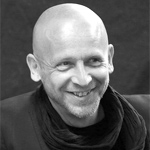
Martin Honzik is an artist and the director of Ars Electronica’s Festival, Prix and Exhibitions divisions. He studied visual experimental design at Linz Art University (2001 graduate) and completed the master’s program in culture & media management at the University of Linz and ICCM Salzburg (2003 graduate). From 1998 to 2001, he was a member of the production team at the OK Center for Contemporary Art. In 2001, he joined the staff of the Ars Electronica FutureLab, where, until 2005, his responsibilities included exhibition design, art in architecture, interface design, event design and project management. Since 2006, Martin Honzik has been director of the Ars Electronica Festival and the Prix Ars Electronica and in charge of exhibitions in the Ars Electronica Center as well as Ars Electronica’s international exhibition projects.
The Ars Electronica Festival of media art will be held September 7-11 in POSTCITY Linz. This year’s theme is Artificial Intelligence – The Other I. To find out more about the festival, follow us on Facebook, Twitter, Instagram et al., subscribe to our newsletter, and check out our website at https://ars.electronica.art/ai/en/.
This project has received funding from the European Union’s Horizon 2020 research and innovation programme under grant agreement No 732019. This publication (communication) reflects the views only of the author, and the European Commission cannot be held responsible for any use which may be made of the information contained therein.